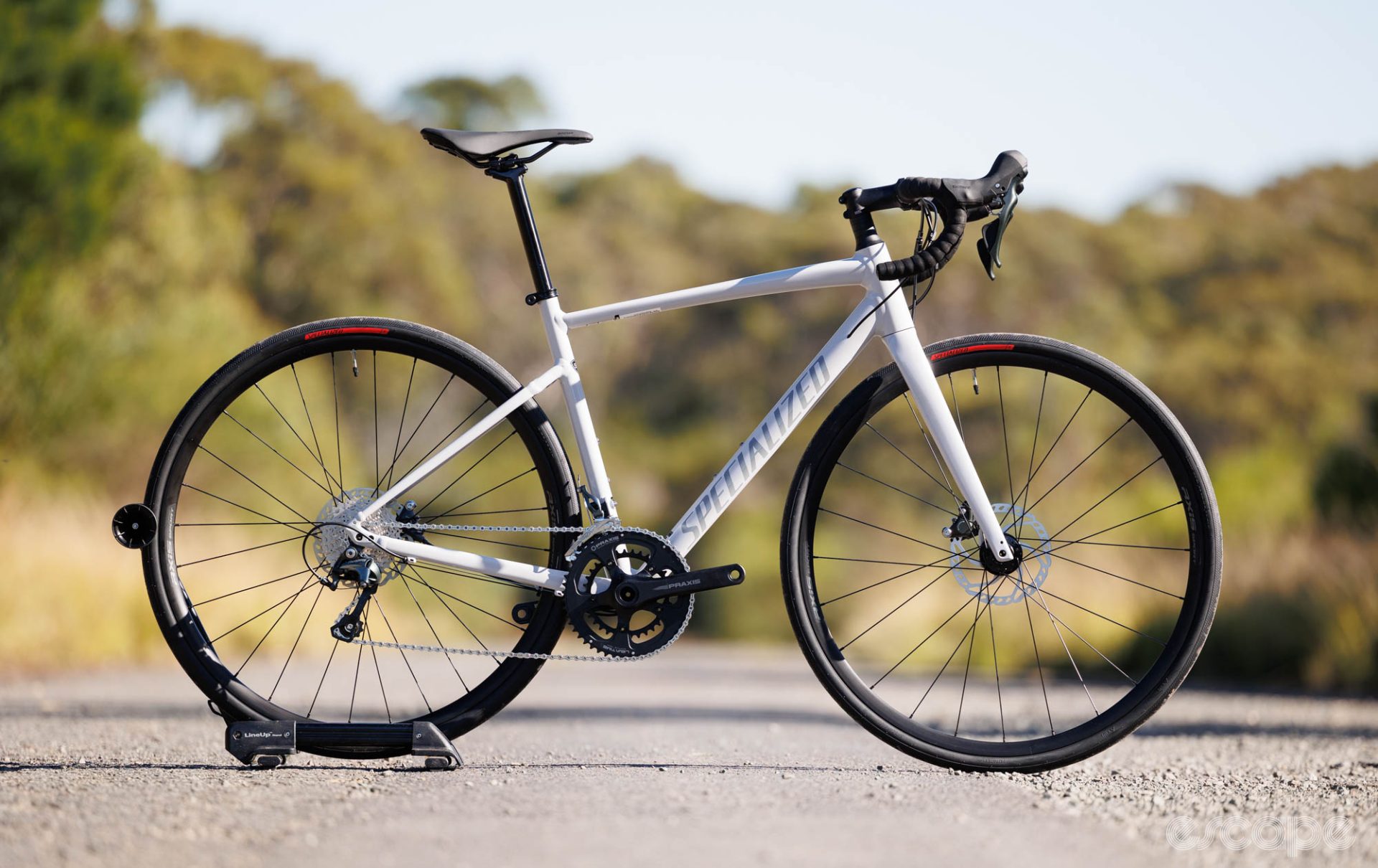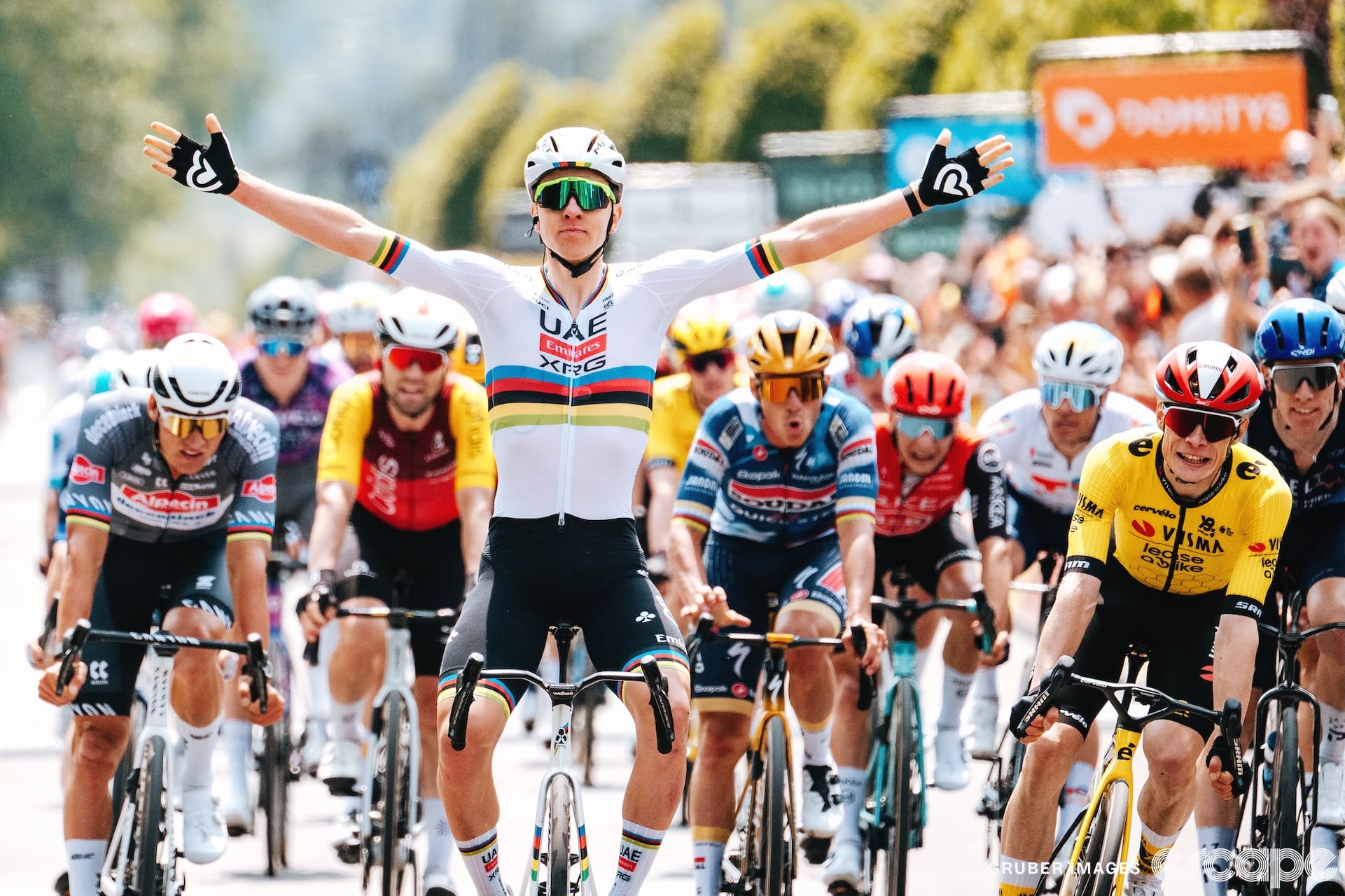Many lifelong cyclists got their start on an entry-level bike bought from a local bike store. And if your entry into road cycling occurred over the past three decades, then chances are likely that you owned a Cannondale CAAD, Specialized Allez, Giant OCR/Defy, Trek, or a similar big-name bike.
Long-running bike lines like the Cannondale CAAD and Specialized Allez series often hold a special place in the hearts of those that have owned them. Partly it’s nostalgia, as these bikes are where many of us found cycling, but it’s also that they’re functional workhorses.
In recent years Specialized had all but neglected its entry-level Allez road bike range. Where the brand often refreshes more premium models every three years, the Allez E5 had sat unattended since 2017. Last year they revitalised the Allez Sprint, a premium alloy bike made for racers, but a redesigned, beginner-friendly Allez was nowhere to be found.
Thankfully that changes today, with Specialized once again catering to the lower end (but not absolute budget!) of the market with a revamped Allez. I’ve been riding the new version around for the past few weeks and will preface this in-depth review by stating that this is possibly the nicest riding entry-level road bike of the long list I’ve tried. Oh my, tickle me impressed.
Good stuff: A zero-fuss aluminium frame that rides, handles, and fits well. Room for 35 mm tyres. Can take fenders and a rack. Sensible component choices with no obvious flaws. Easy to service. A bike worthy of upgrading.
Bad stuff: Disc brakes make entry-level road bikes heavy. Limited to low-level specifications. Like everything, even entry-level bikes are more expensive than ever.
The new Allez, explained
The Allez has long stood as Specialized’s entry-level platform to the road cycling world, and this new bike doesn’t stray too far from that. What has changed is that the E5 naming has been dropped and that the Allez is now disc-brake-only. Moving away from rim brakes inherently means the Allez isn't an absolute bottom-dollar choice, a market that the California-based bike company is seemingly willing to leave to others.
Those disc brakes have opened the Allez up to be more versatile and in turn competitive to great bikes like the Giant Contend AR and Trek Domane AL Disc. There is now ample room for light-gravel-friendly 35 mm tyres, or 32 mm tyres with full-length fenders. The mention of fenders of course means mounting provisions, and those mounts also allow for a proper rear rack and panniers.
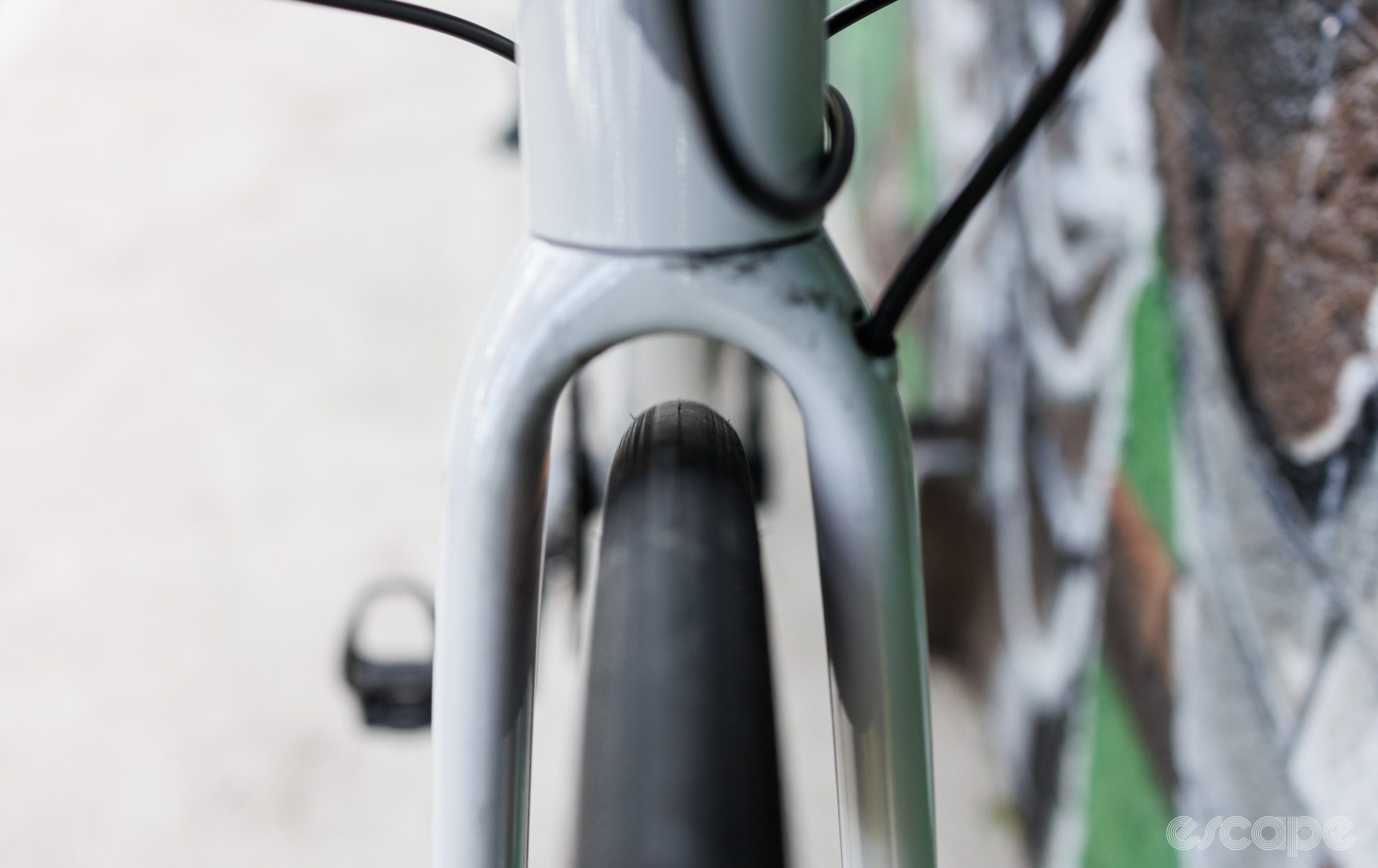
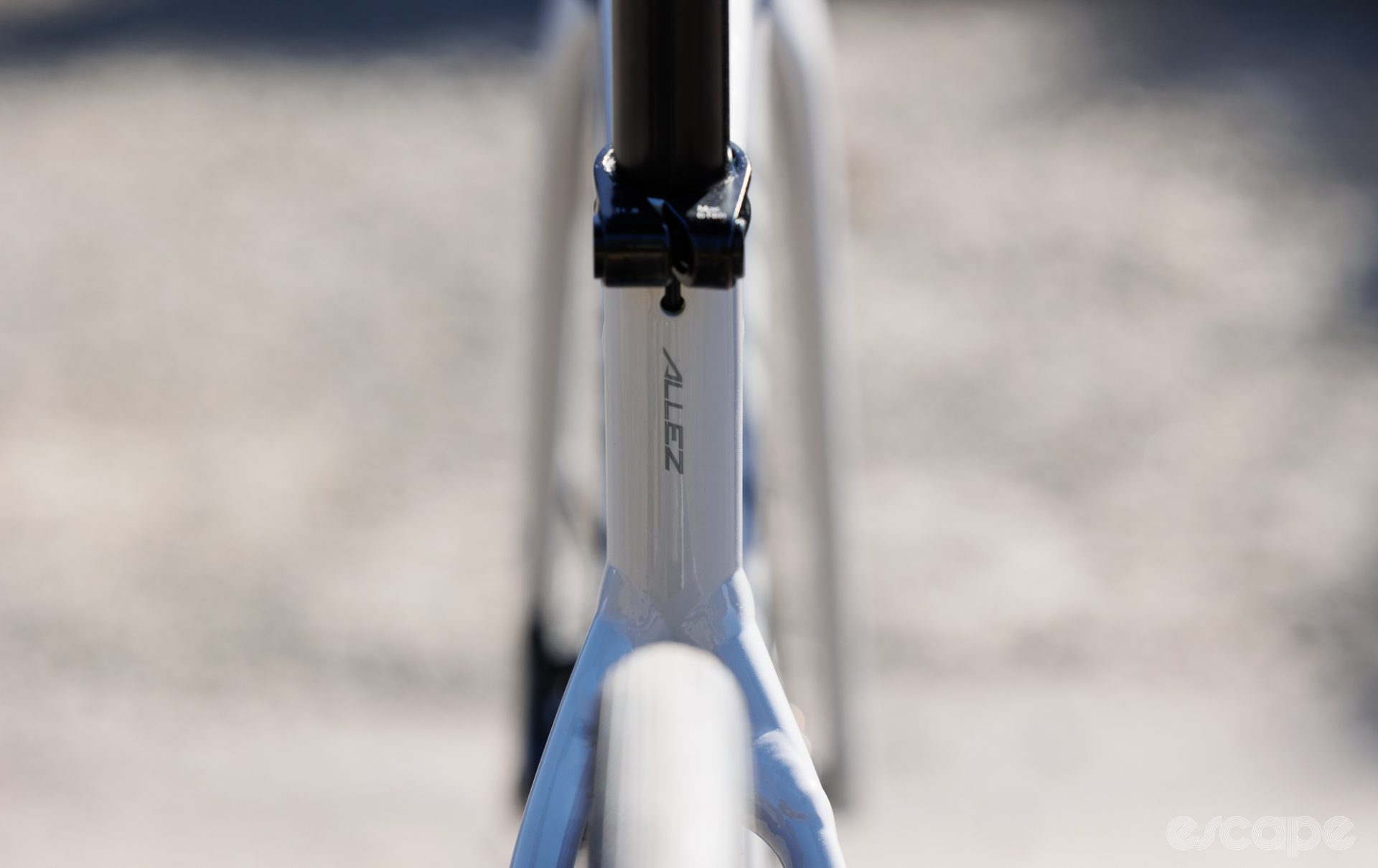
Like the Contend AR and Domane AL Disc, the Allez offers more-relaxed fit dimensions that should be welcoming to most potential customers. In this sense, the key fit metrics of the new Allez are most comparable to the company’s endurance road bike, the Roubaix. There's also a very broad range of seven sizes that Specialized claims will accommodate riders from 1.42 to 1.96 m (4' 8" to 6' 5") in height.
The new frame keeps many elements remarkably simple, and I’m more than pleased to see Specialized not try to hide the numerous cables through the stem and steerer tube like Scott and Orbea have done with their entry-level road bikes. Instead, cables are kept traditionally external at the handlebar, and then enter the frame at the down tube. The rear derailleur cable and rear brake hose both exit the frame beyond the bottom bracket, with the former becoming segmented (exposed inner wire) for easier adjustments and cable health checks.
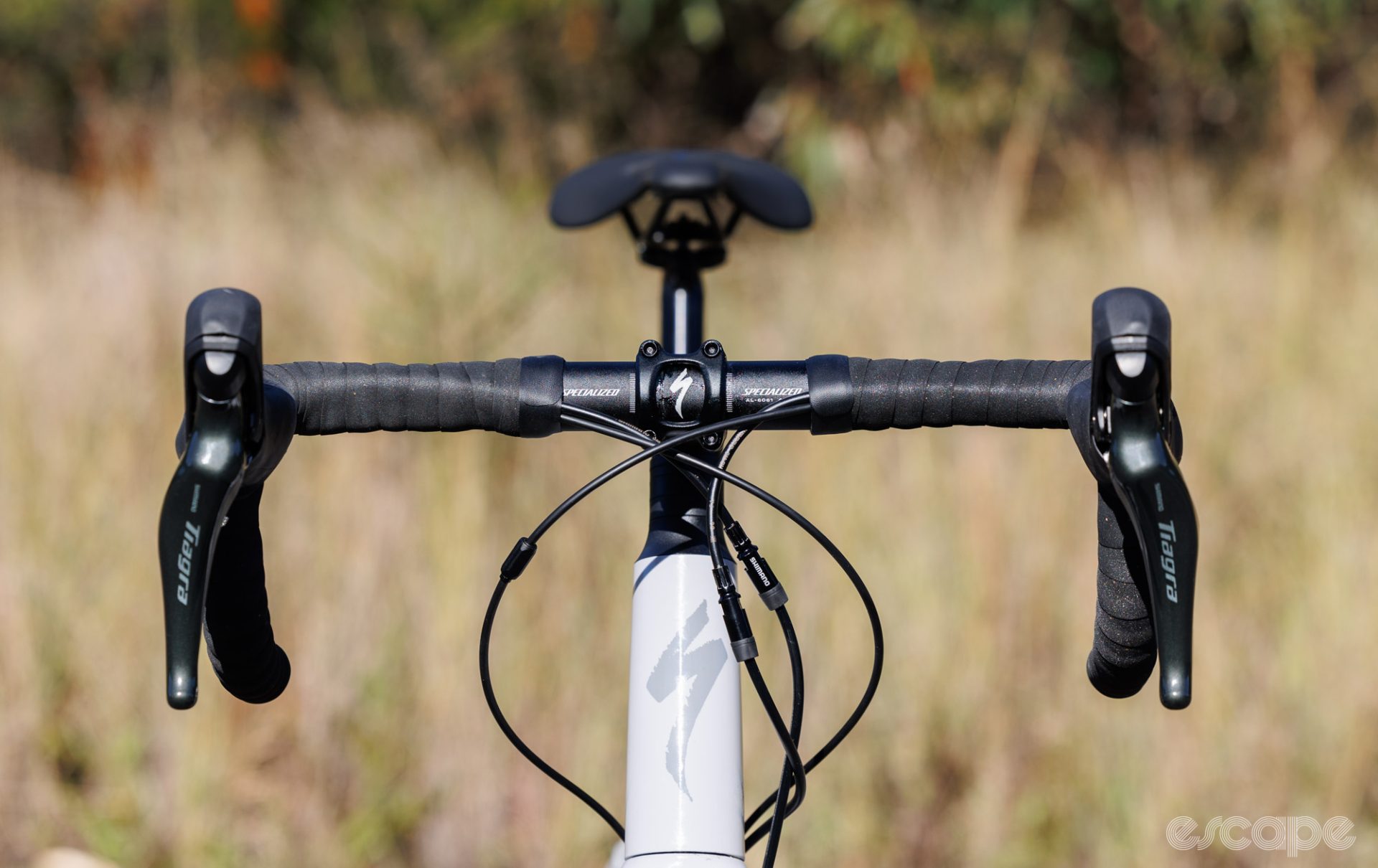
The full aluminium frame features subtle hydroforming to give the tubes some shape (most obvious on the top tube) – although it’s about as aerodynamically optimised as a kettle. Meanwhile, the down tube, top tube, and seat tube are double-butted – meaning the tube thickness is thinner in the centre than at the ends – which helps to reduce weight and can assist with the ride feel of a frame, too.
A look at the Allez’s specifications will reveal a mention of “SmoothWelds”. To clarify, this is Specialized’s terminology for a process that effectively squishes the weld into the seam to create a stronger joint. Despite the misleading name, the welds are not smoothed over or ground down, and indeed, the weld beads are visible at every corner of the bike. Perhaps "StrongWeld" would have been a more fitting term.
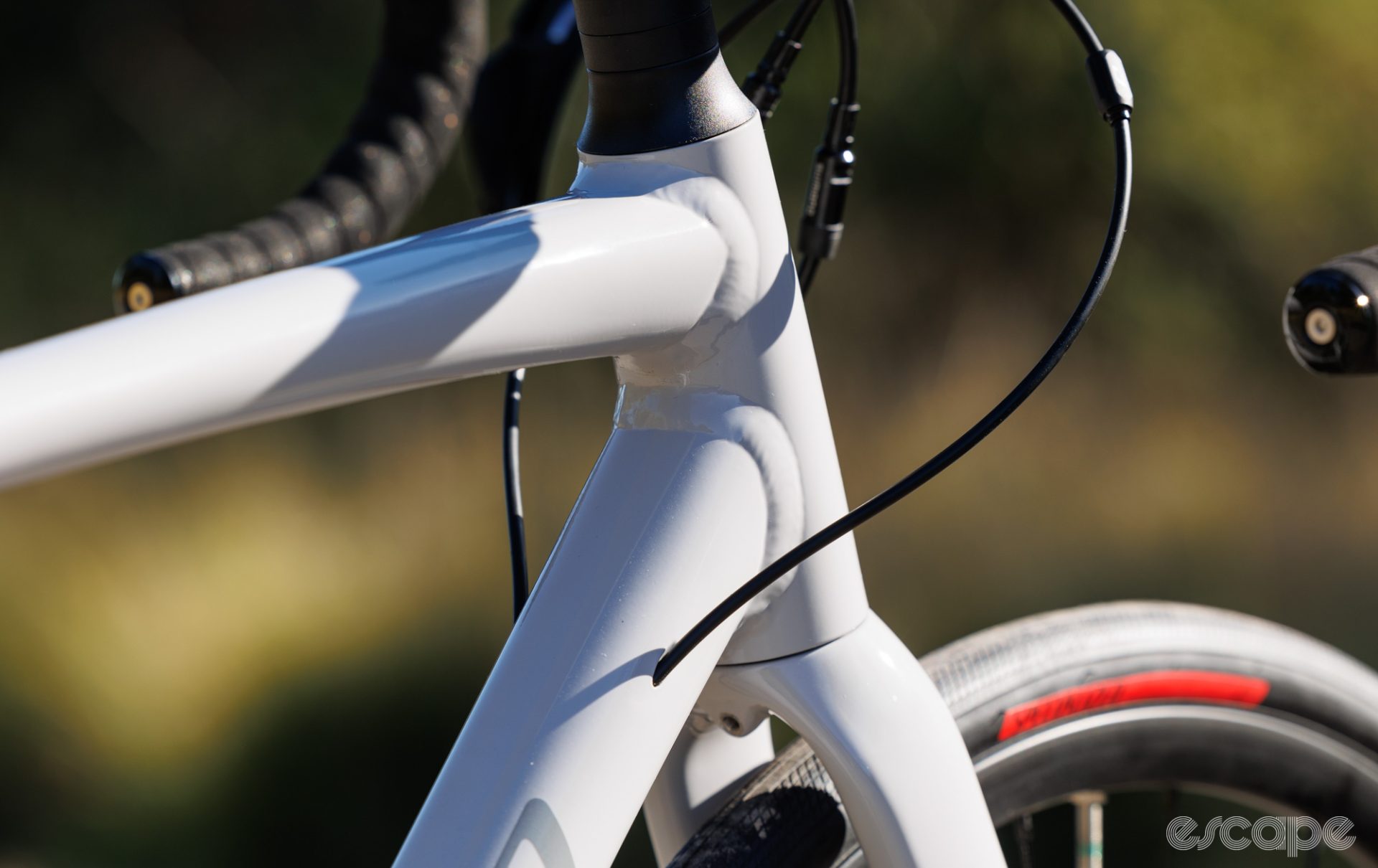
Other worthwhile details include an English-threaded bottom bracket, the use of a common 27.2 mm round seatpost, and an external seat-clamp. There’s nothing quirky at the front of the bike, either. Perhaps the only fitment limitation is that the cable routing is restricted to mechanical shifting (or wireless electronic), but that’s hardly a relevant complaint given the cost of electronic groupsets compared to a complete Allez.
All told, the aluminium frame weighs an actual 1,444 grams (52 cm size, including the rear derailleur hanger and cable guide), and that’s mated with a 440 g full carbon tapered-steerer fork specific to the new Allez. These are respectable figures amongst entry-level road bikes, and they don’t look too bad when many base-level carbon frames still hover around 1,000 grams.
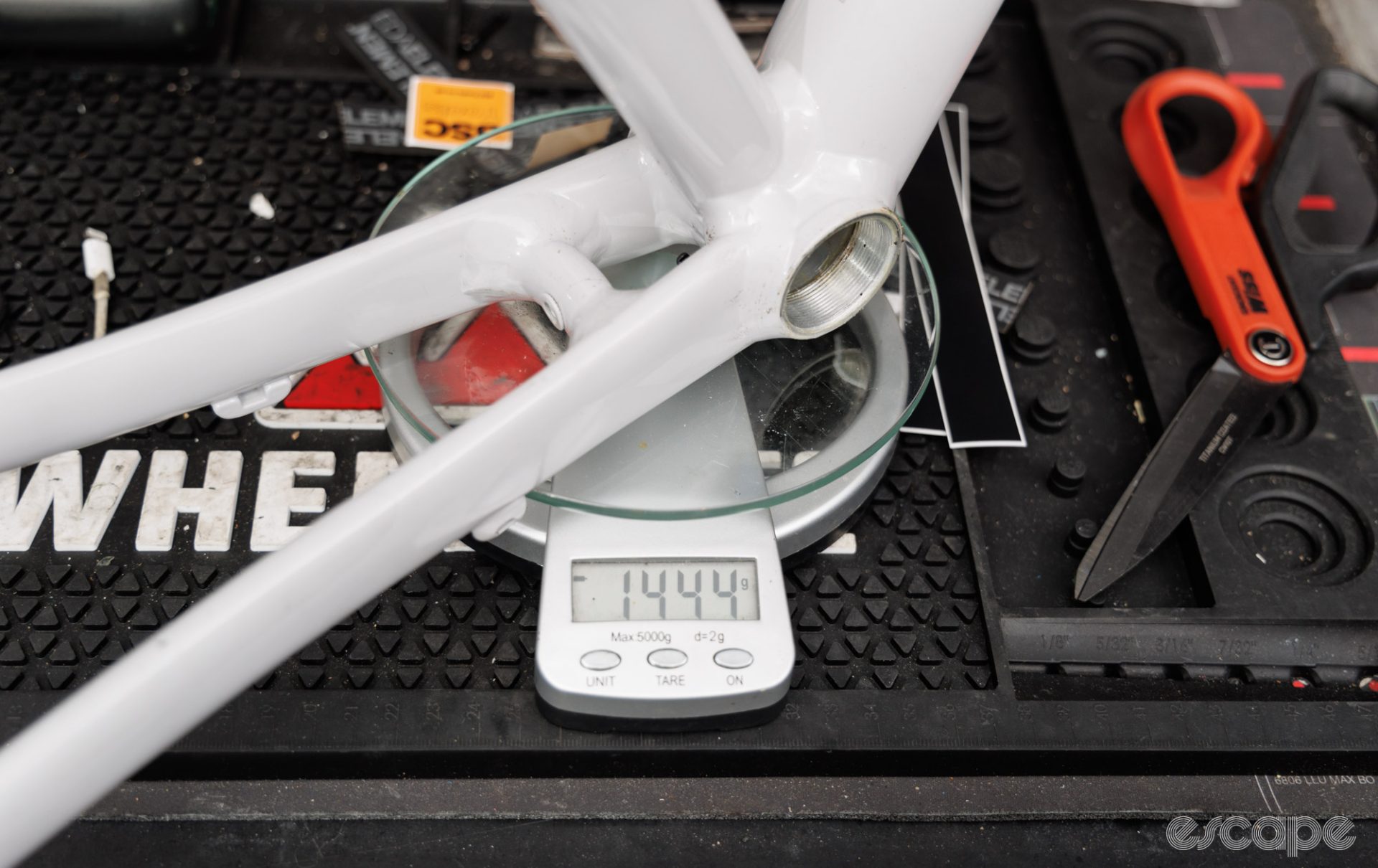
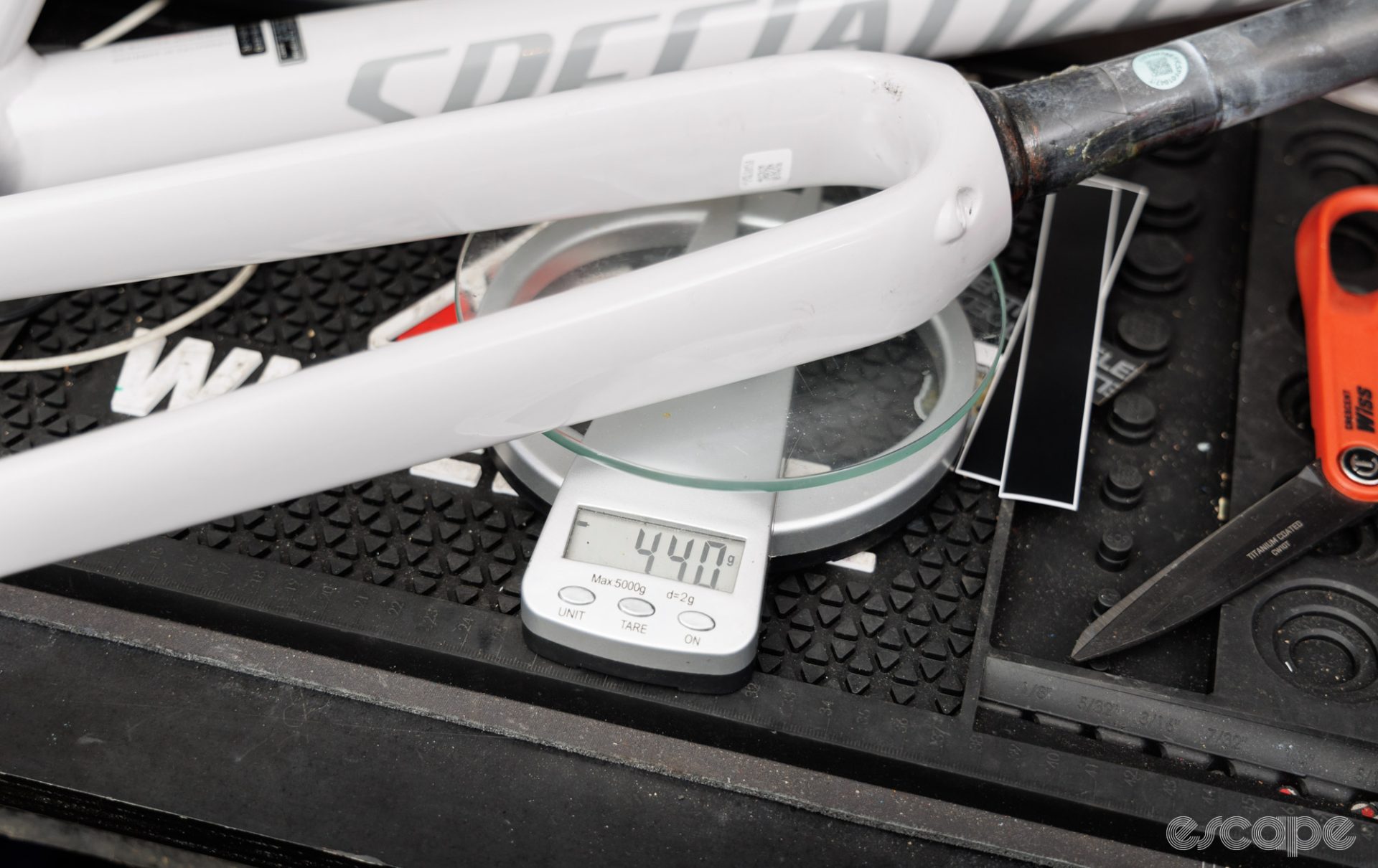
Specialized has launched two options for the Allez. The base-level Allez retails for US$1,200 / AU$1,800 / £ 1,100 / €1,200 and is equipped with Shimano’s base-level Claris 8-speed shifting and Tektro mechanical disc brakes. It rolls on rather generic AXIS wheels that offer a tubeless-ready rim with a 21 mm internal width, and wrapping them are some of Specialized’s own wire-beaded tyres in a 30 mm width.
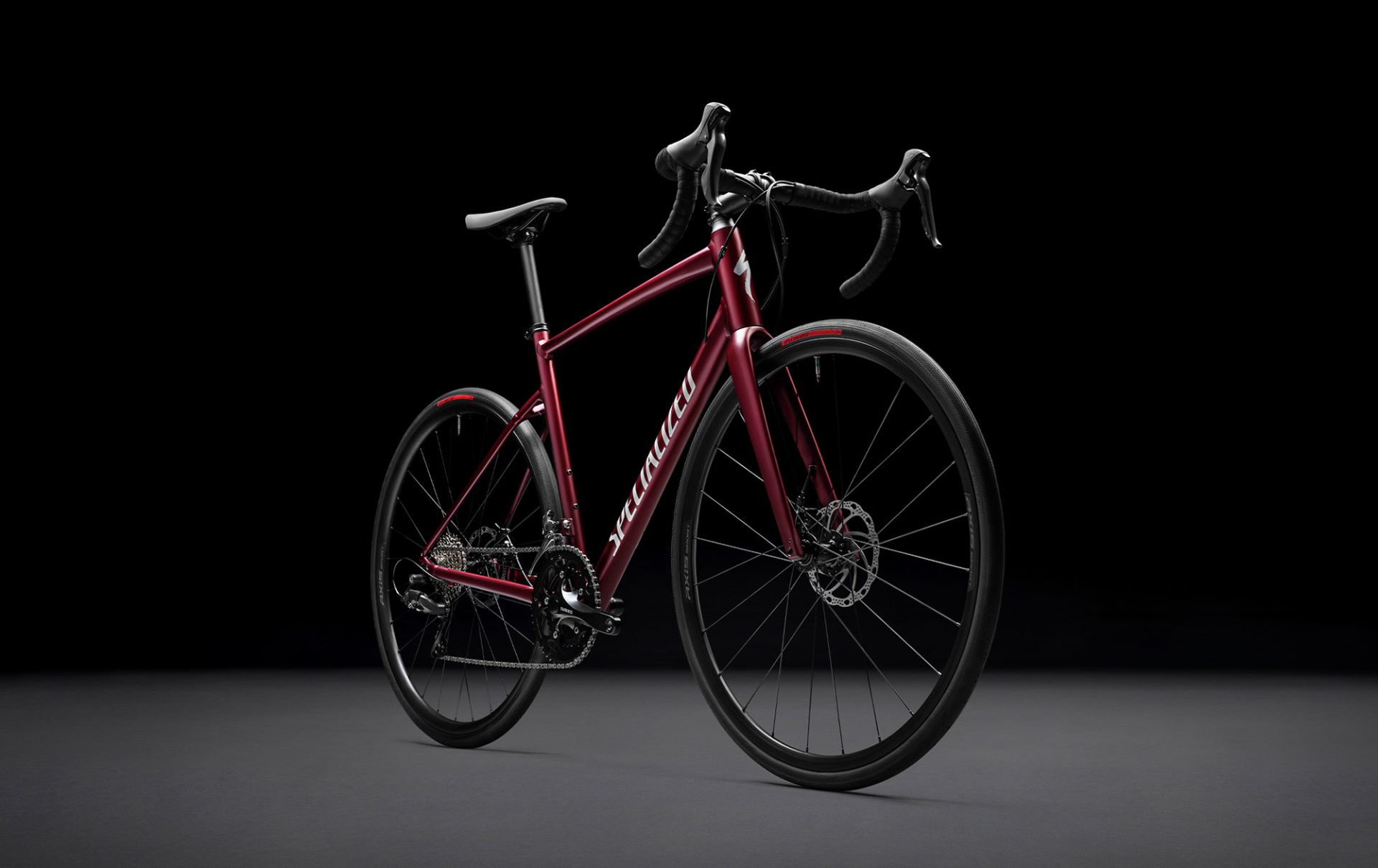
Meanwhile, the Allez Sport, as tested, is the more premium option at US$1,800 / AU$2,500 / £1,600 / €1,750. The Allez Sport features Shimano Tiagra 2x10 speed shifting and matching hydraulic disc brakes, while the frame, fork, touchpoints, and wheels are shared with the base model. My 52 cm tester weighed 9.51 kg (20.9 lbs) without pedals or accessories, a figure that, as covered below, is easily reduced. In addition to the "Gloss Dove Grey" colour tested, it's also available in a "Tropical Teal" and a simpler gloss black.
There is no frameset option. This is a common theme amongst lower-end bikes where manufacturers and brands make their profit on the parts.
The bike pricing may seem high to those who have been in cycling for a while, but it's comparable with much of the competition, a detail I'll return to after the ride impressions.
Regardless of price, this bike rides great
Riding the Allez Sport reminded me that you don’t need to spend a fortune in order to have a truly enjoyable riding experience. It also reminded me that a good riding bike is far more than the parts attached to it.
That experience starts with some sensible choices in the geometry department – something that in theory, costs the brand nothing but requires experience. The geometry largely dictates how the bike fits the rider and how it handles. The new Allez is intentionally more relaxed in its fit, and when compared to more performance-focused bikes, the reach to the handlebars is shorter, and those handlebars sit higher, too.
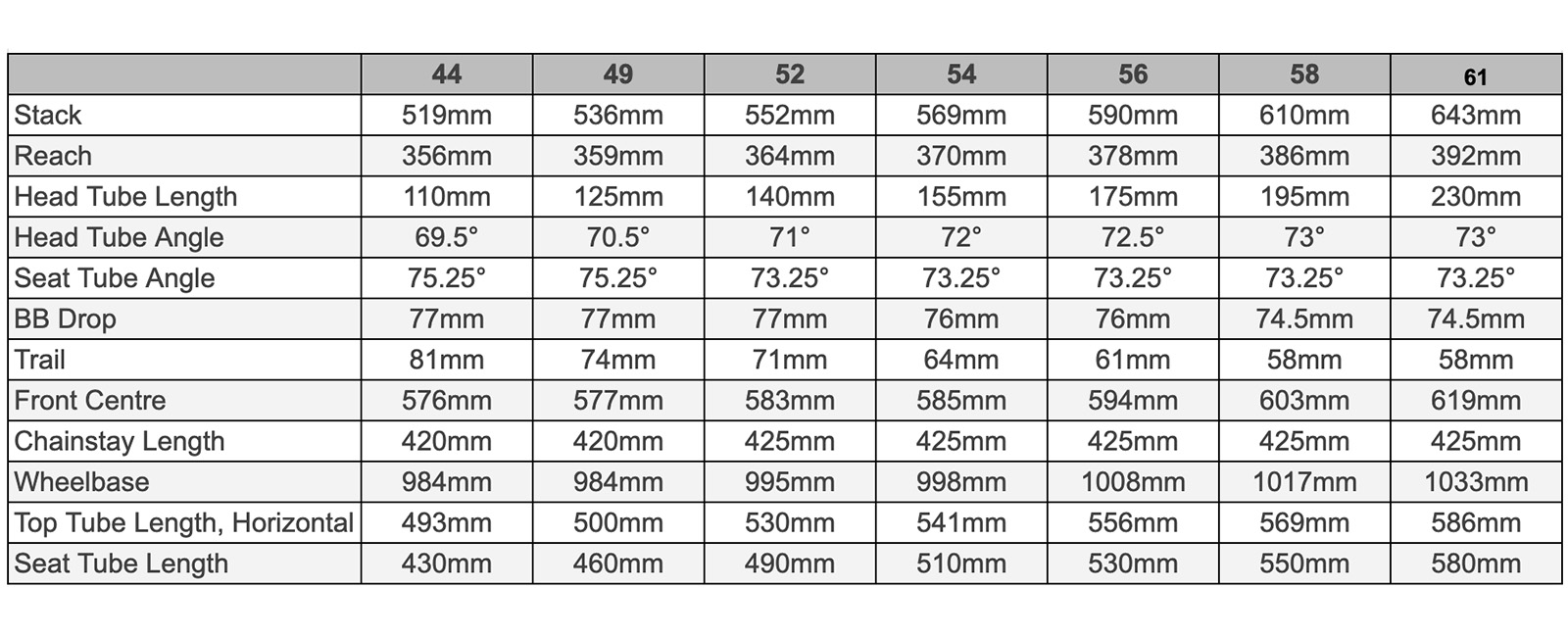
I’m a huge proponent of bikes like this that offer increased stack height and reduced reach. The reality is that many of us spend our days with poor posture in an office chair and not nearly enough time working on the structural fitness required to ride a race-focussed road bike comfortably and/or efficiently. Specialized has nailed a geometry that’ll welcome both new and old riders while not making it so relaxed and with such a high centre of gravity that carving a corner becomes awkward.
It’s also not so far into the realm of upright comfort that would rule it out to someone seeking a more performance-type fit to pursue racing aspirations – a change to a longer stem and perhaps a shorter cover for the headset would prepare it for that.
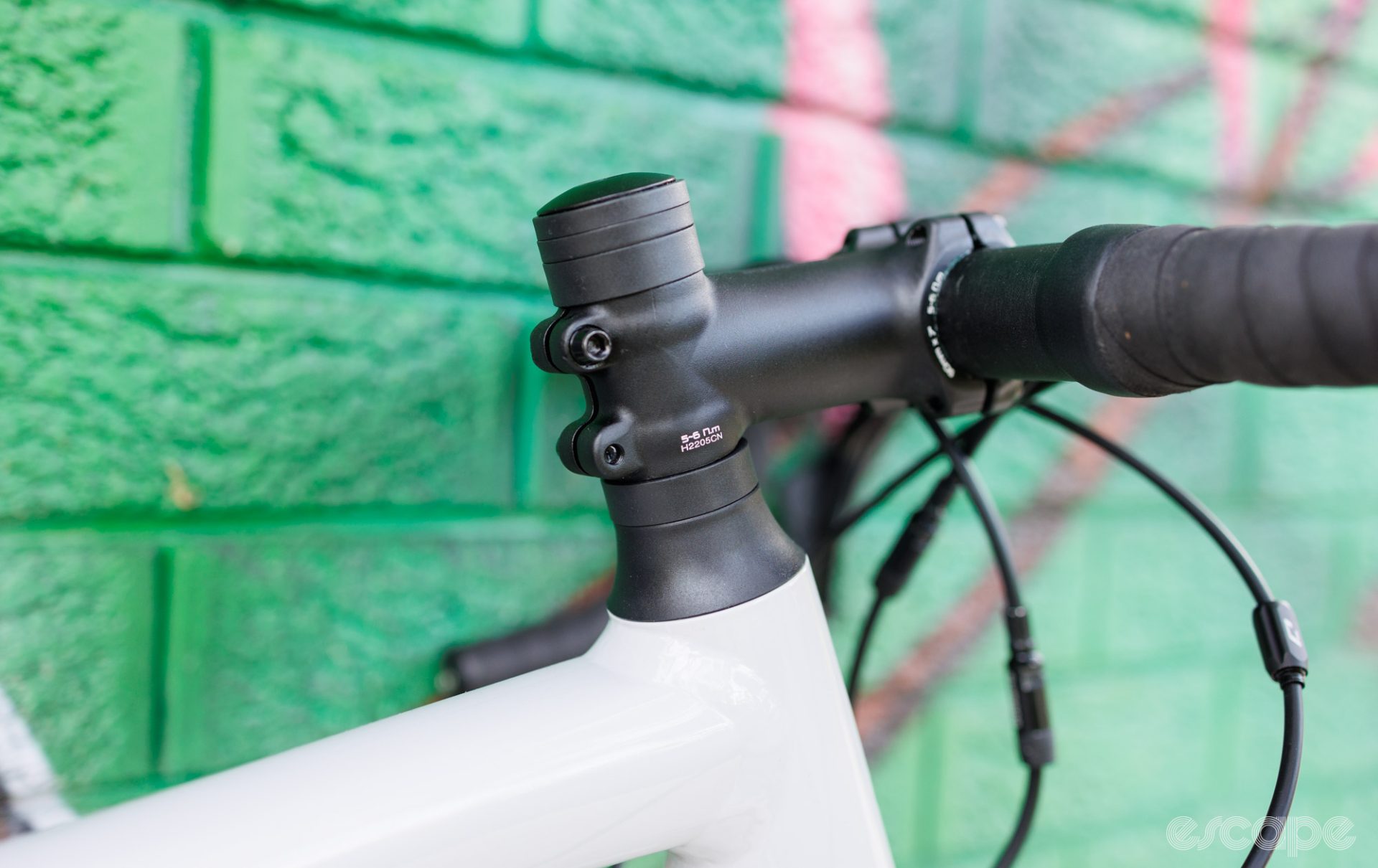
From a handling point of view, the new Allez features progressively quicker steering angles as you look through the seven available frame sizes. This is done to keep the responsiveness of the bike feeling roughly the same while overcoming the fact that wheelbase lengths increase with size (a longer wheelbase typically makes a bike feel more stable).
In the case of my tested 52 cm size, the relatively long 69 mm (with 30 mm tyres) trail figure offers a handling characteristic that feels a long way from the twitchiness that is sometimes felt in pure race bikes. Put another way, the Allez strikes a good balance between being easy to handle and still enjoyable to push the limits on corners and descents. However, such good handling does come with the expected trade-off of toe-overlap at the front wheel in smaller sizes, an issue that worsens as the tyre size increases.
Helping the bike to steer well is a planted and surprisingly muted feel with the road (or gravel). A large amount of this smoothness can be attributed to the 31.4 mm (measured width) rubber, which should be run at lower pressures. Similarly, the well-padded Specialized Bridge saddle does an admirable job of soaking up bumps. And there’s a small amount of welcomed flex to that frame, too (subjectively more than you get with the Allez Sprint, and torsionally more than a Tarmac).
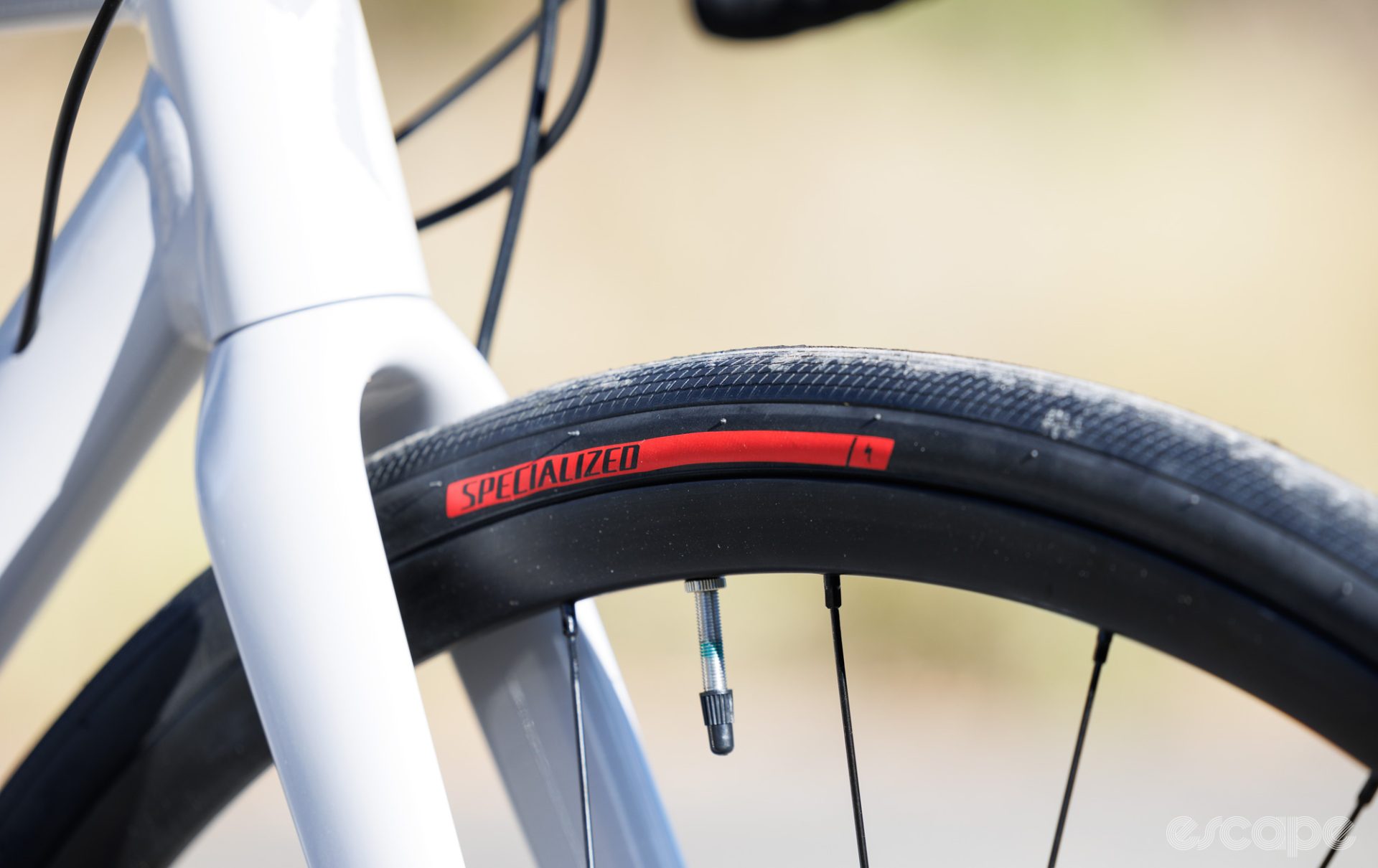
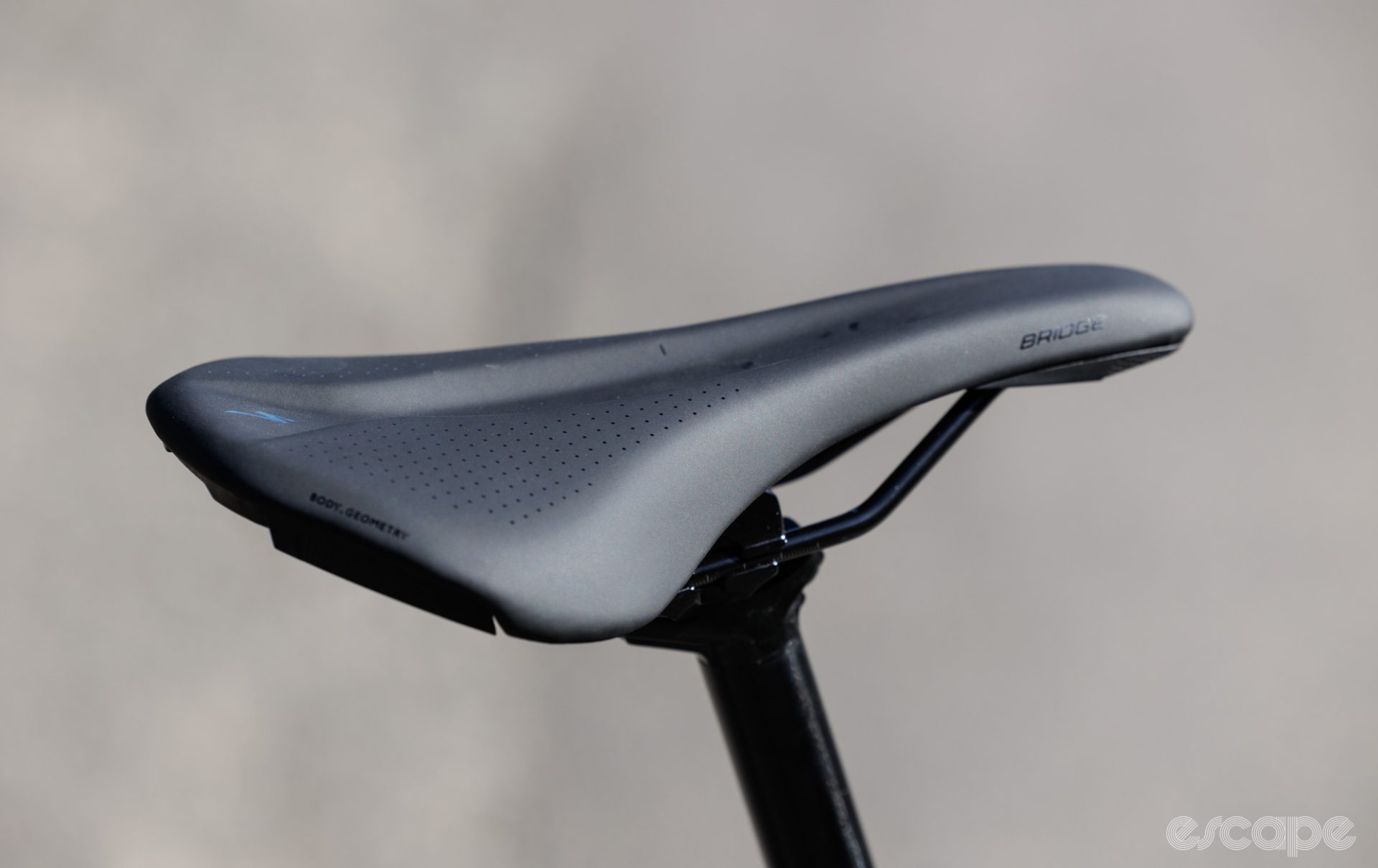
The Allez is also ready for use as an all-road style bike, mixing up both tarmac and well-kept gravel roads. With official room for 35 mm tyres, and unofficial room for a smidge larger again, you can run a decently capable gravel tyre. The Allez offers a geometry not too different to many popular gravel bikes and will easily shrug off the abuse of going off-road, but just note that the toe overlap and road gearing are likely to be the limiting factors compared to a more gravel-oriented bike.
Science tells us that a kilogram here or there in bike weight doesn’t make a huge difference to one’s performance. However, the math misses how a bike feels, and it’s undeniable that a lighter bike naturally feels more reactive and better on the climbs. And so it shouldn’t be surprising that a bike weighing 9.51 kg (before pedals and accessories) doesn’t jump to attention with the same sensations as a lighter and more expensive one.
I can’t fault how the Allez handles, fits, and rides. And if it weren’t for the higher weight or subtly clunkier shifts, I’d be hard-pressed to say this wasn’t at least a mid-level bike. But one of the beauties of cycling from a tech perspective is having the freedom to customize and upgrade, so let’s talk about those components, and what can be done to make this bike feel exceptional.
Component highs without many lows
The Allez Sport may be a budget-minded bike, but it’s the culmination of many small and easily overlooked details that prove Specialized’s desire to make a bike that’s enjoyable to own and feels higher-end than it is. Add in the good geometry, nice ride quality, and respectable frame weight, and the Allez Sport is a bike worth upgrading into a better one.
One example of the finer details is seen with Specialized’s hallmark thru-axles, whose countersunk design provides a clean look, and conical brass washer a smooth operation over time. Meanwhile, the low profile and lightweight alloy bidon cage bolts are the same as what you’ll find on an S-Works. And then another simple detail are the aluminium bar end plugs that expand into place, but one you’re unlikely to find on many other beginner-focussed road bikes.
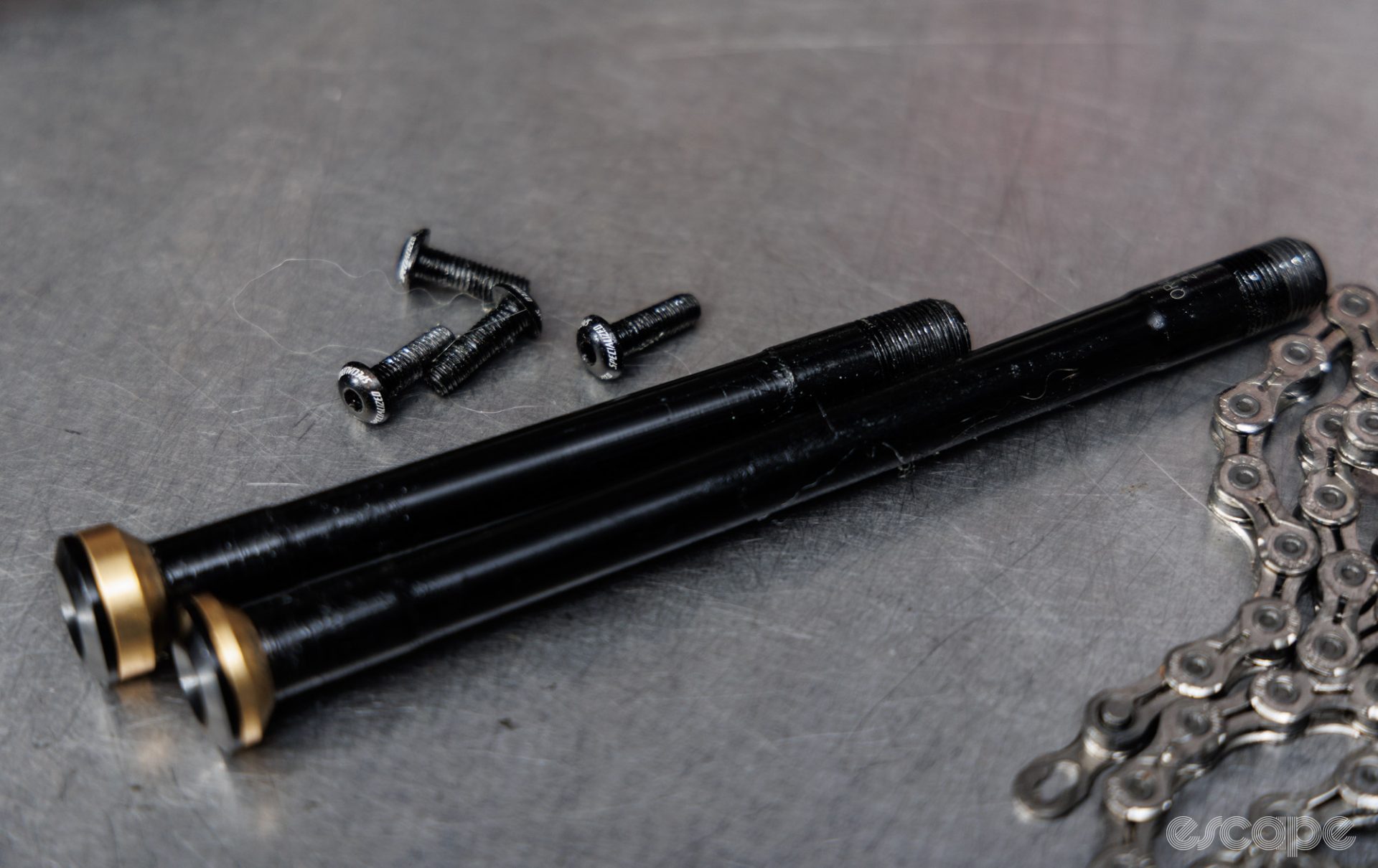
Obviously, you’re paying for many of these little flourishes, but for me, it’s a factor in what sets this bike apart from other lower-priced road bikes with similar key equipment choices. And those thoughtful details aren’t limited to the tiny parts, either.
The bike shifts and brakes with Shimano’s Tiagra components, but Specialized has shaved approximately 300 grams by substituting a Praxis Alba forged aluminum crank and Sunrace cassette. The crankset spins on Praxis’ own bottom bracket of respectable quality, and provides compact-size (50/34T) chainrings that shift almost as well as the benchmark Shimano. Meanwhile, the combination of the lightened KMC chain and Sunrace 11-32T cassette don’t shift quite as smoothly as their Shimano counterparts, but shouldn’t leave anyone complaining. And bonus points are earned for the use of authentic Shimano SP-41 gear cable housing!
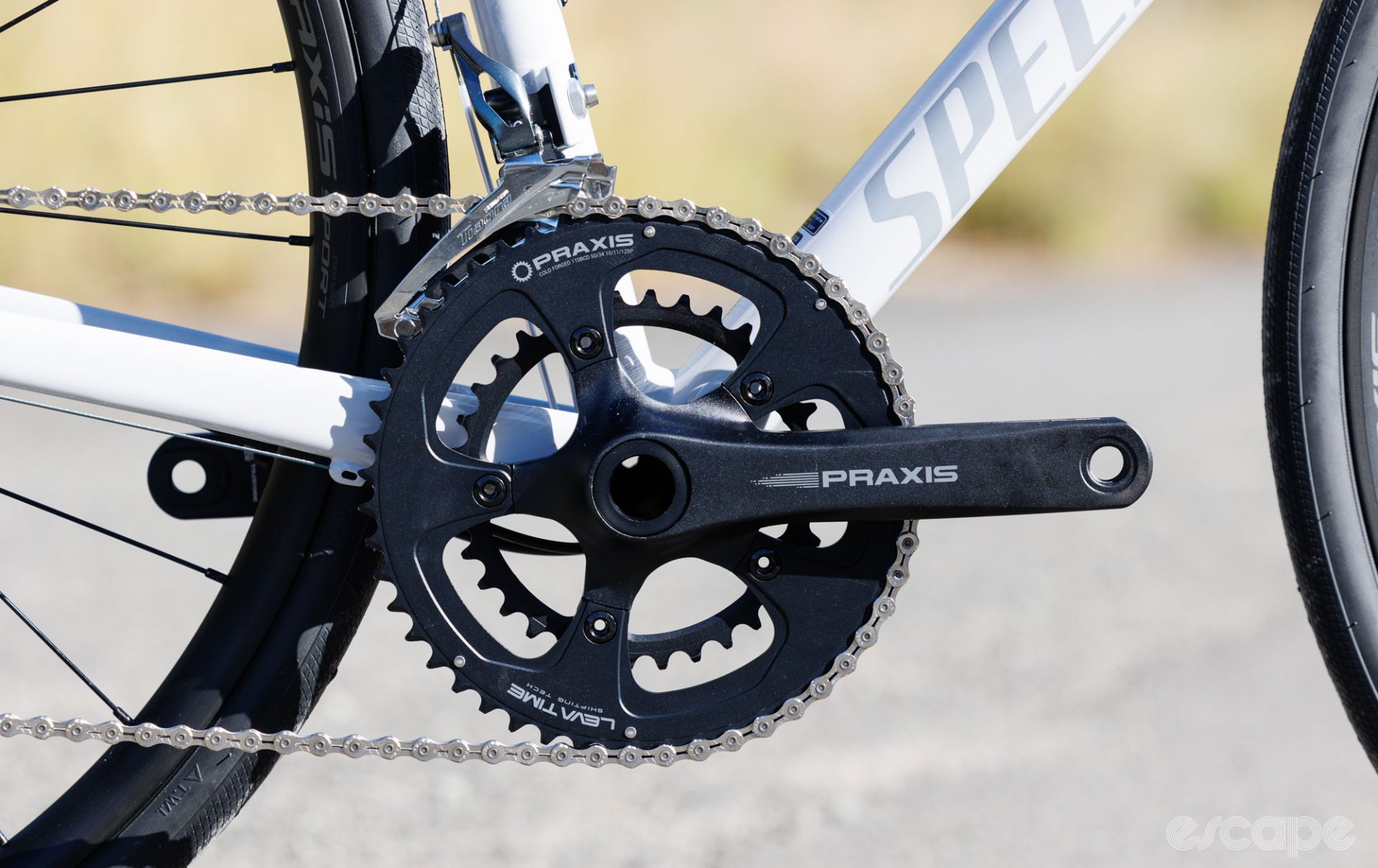
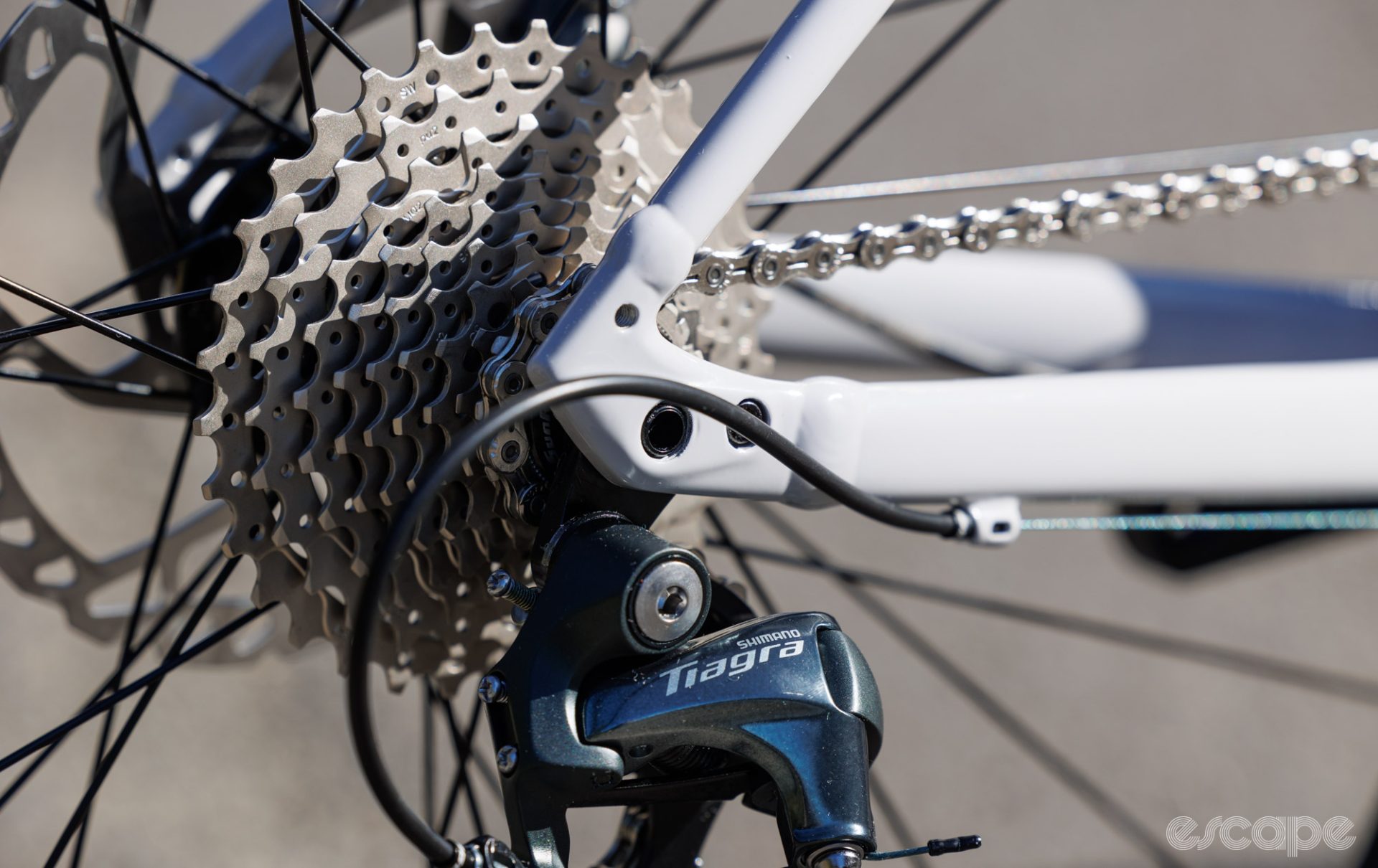
Overall, the shifting performance of 10-speed Tiagra is at least as good as Shimano’s 105 and even Ultegra from the days those were 10-speed. And that compact-crank gearing range, while not super low, has a good spread for a modern road bike. Meanwhile, the braking performance is impressively good and I think many will appreciate the flat profile of the brake lever that gives a more comfortable finger perch when braking from the hoods. These brakes require a decent level of force to lock a wheel, although that softer initial bite is arguably a good thing for confident stopping without causing an uncontrolled skid.
I was also perfectly happy with the stock saddle and compact-shape handlebar – and I’m rarely happy with stock saddles. Meanwhile, the aluminium seatpost proved perfectly functional, but at 320 grams it does provide an opportunity to save some weight while gaining even more seated comfort with an upgrade to an intentionally flexible carbon fibre model.
There’s plenty to love here, but there are obvious reminders that this bike is built to hit a price point. At 1,940 g, the stock wheels make the Allez Sport feel like the entry-level bike it is. As you’d expect for the weight, these tubeless-ready wheels can take some abuse. Made by Joytech, the hubs feature adjustable cartridge bearings, but it’s important to note the freehub is a sealed unit designed for replacement rather than a simple regrease-and-go.
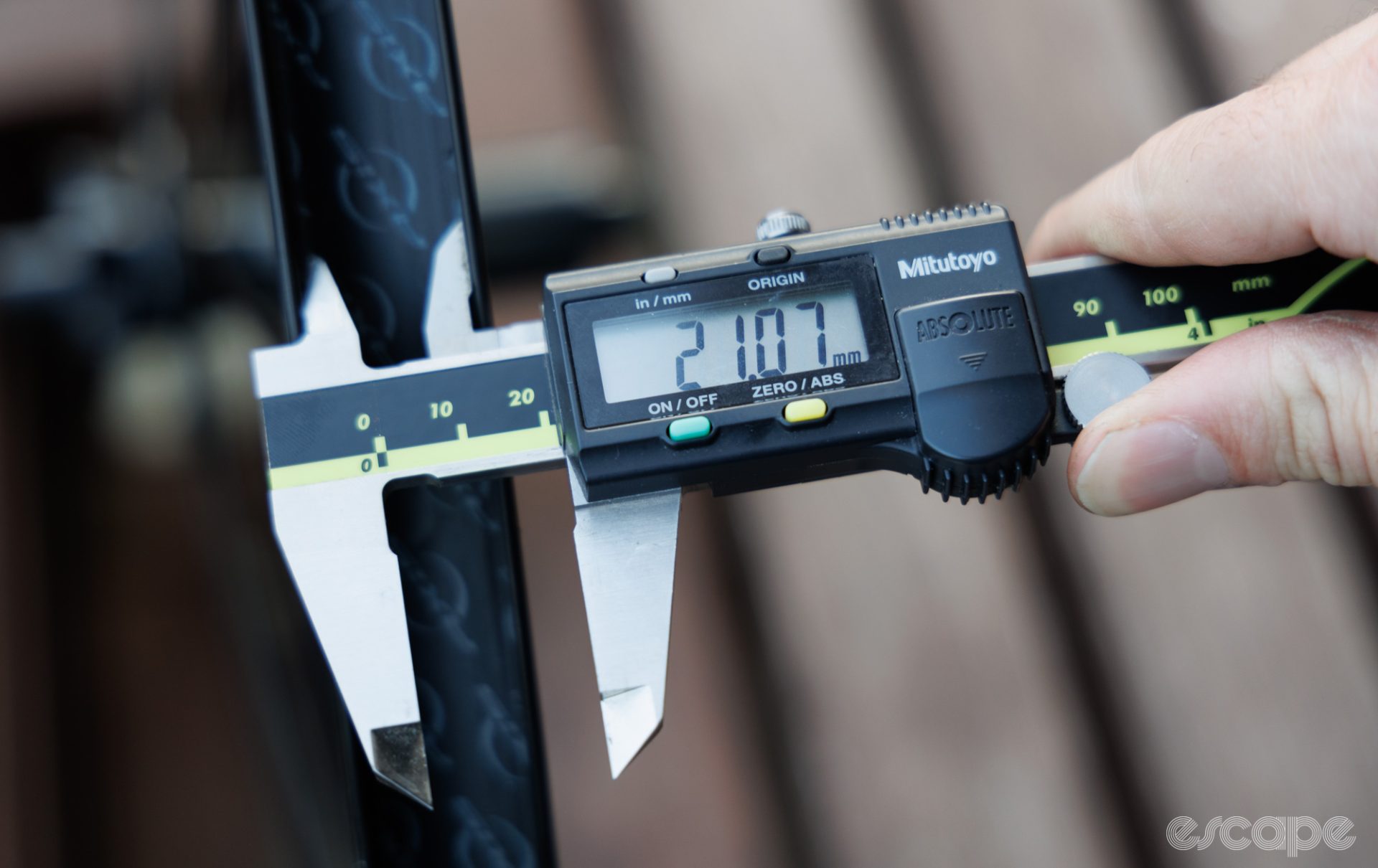
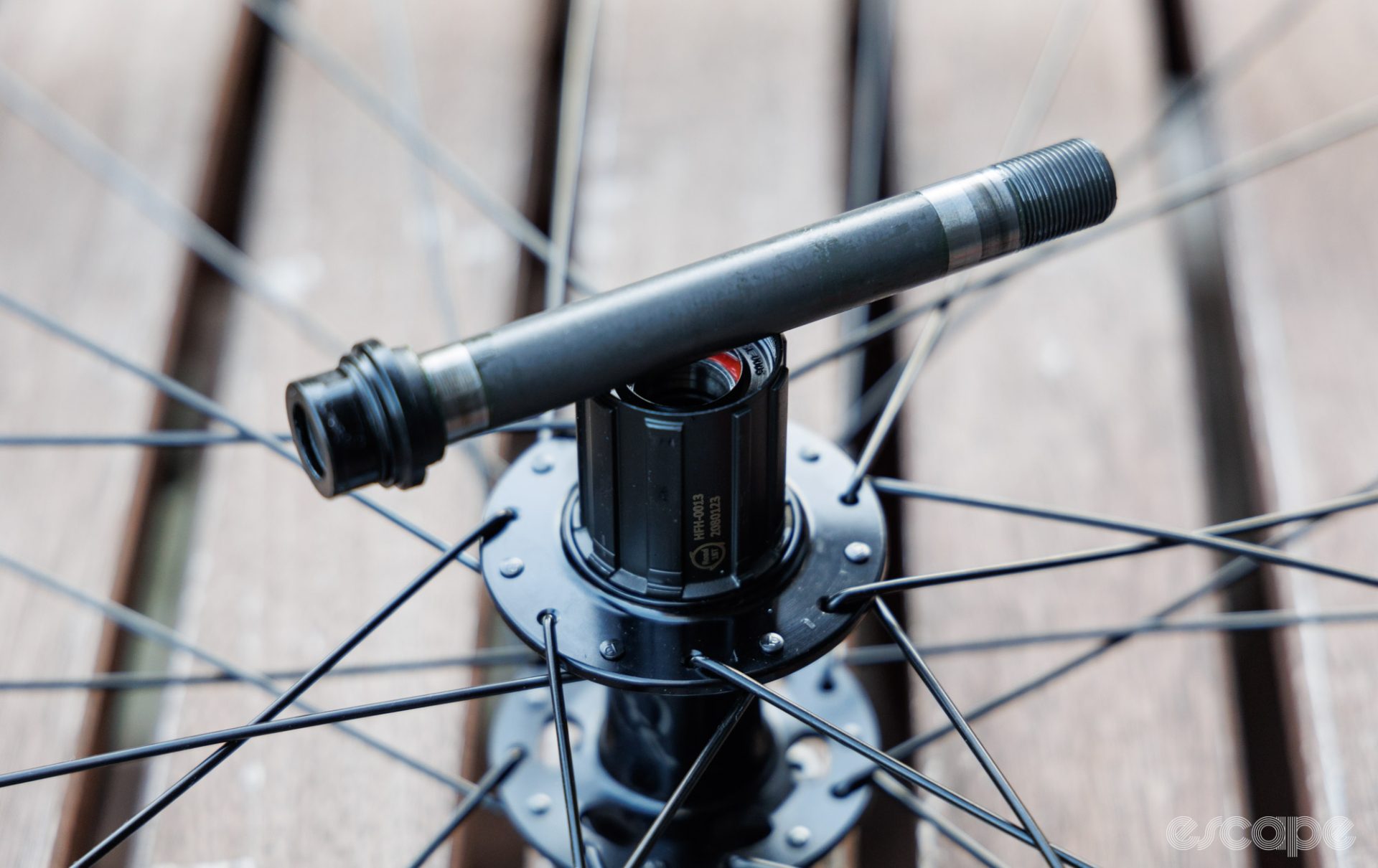
Much of the sense of sluggishness falls on Specialized’s Roadsport tyres which feature a thick casing and a wire-bead construction that results in a hefty 450 g figure. While admittedly, they offer good traction and reliable puncture resistance, they’re the first thing I’d look to change in squeezing more juice from the Allez.
To test that point, I fitted my tester with some of Shimano’s 105 C46 carbon wheels and Specialized’s top-tier tubeless tyres in a 28 mm size. And while those Shimano hoops aren’t considered super light, this still resulted in nearly a kilogram saved from the bike while adding a small aerodynamic benefit. The Allez Sport suddenly felt deserving of its sporty handling, it was more eager to climb, and those deeper-profile rims made it much easier to hold speed. Of course, such a wheel and tyre upgrade is almost 80% of the bike’s initial price, but similar gains can be achieved with less expense.

Specialized sells its bikes through retailers responsible for ensuring the bike is sized correctly and assembled to a good standard. Still, In building (and stripping) the bike down to a bare frame, I got a good perspective on what customers (and shops!) should be paying attention to.
On the positive side, I found generous amounts of waterproof grease packed into the bottom bracket and headset for corrosion resistance. The rear brake hose is covered with a foam insulation to keep noise within the frame at bay. And the way the cable routing is done with full-length housing until the bottom bracket should allow for easy inner gear cable replacement.
Unfortunately, my sample arrived with hoods placed too low on the handlebar, which prevented a comfortable wrist position, and required retaping of the bars to correct (and that tape started to tear in being undone). Similarly, the cable lengths were on the long side for a neat visual, but that's intentional so as to allow a longer stem to be fitted. And while customers certainly won’t see this, I would like to see Specialized make more of an effort to reduce the amount of single-use plastic within its factory packaging.
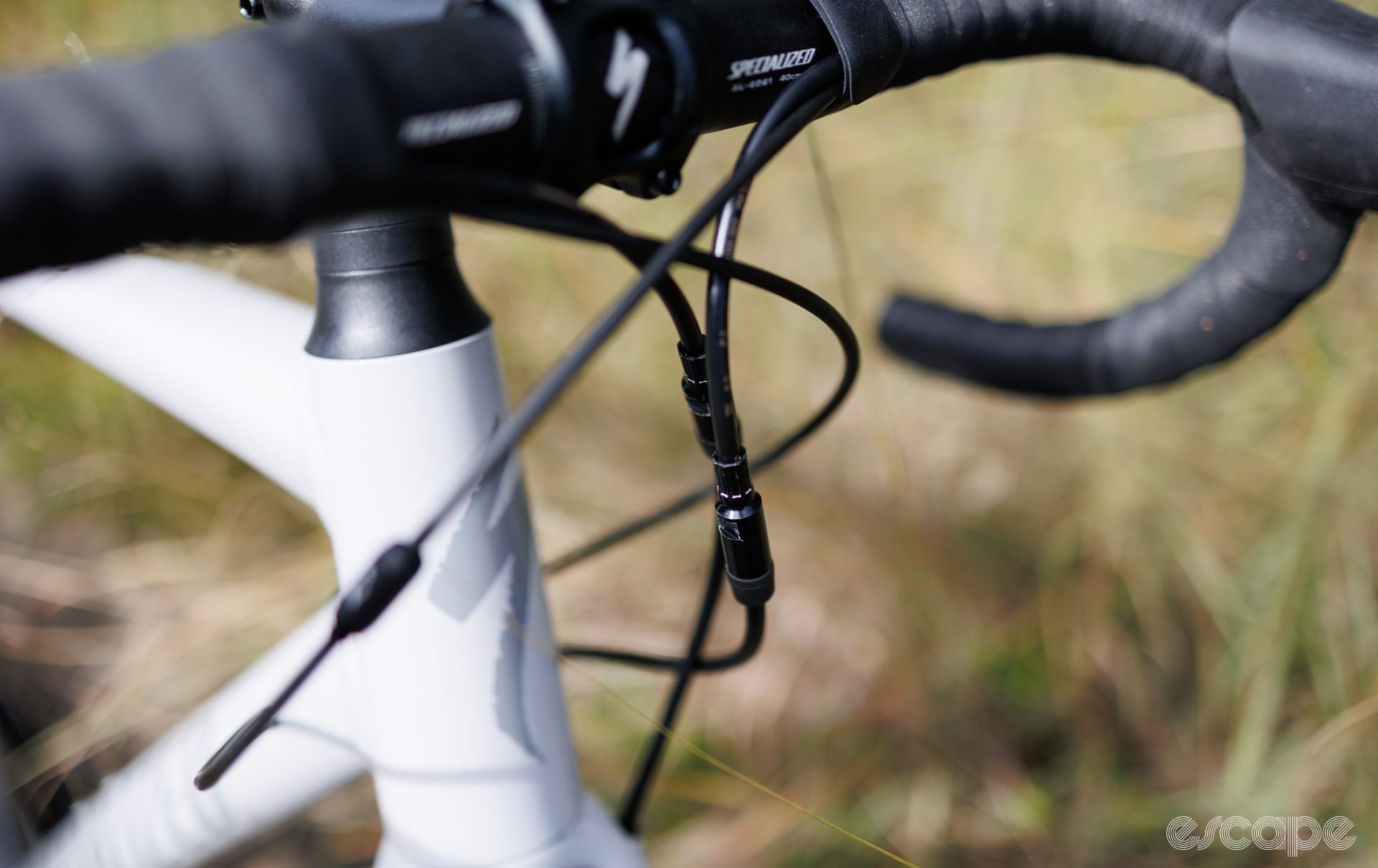
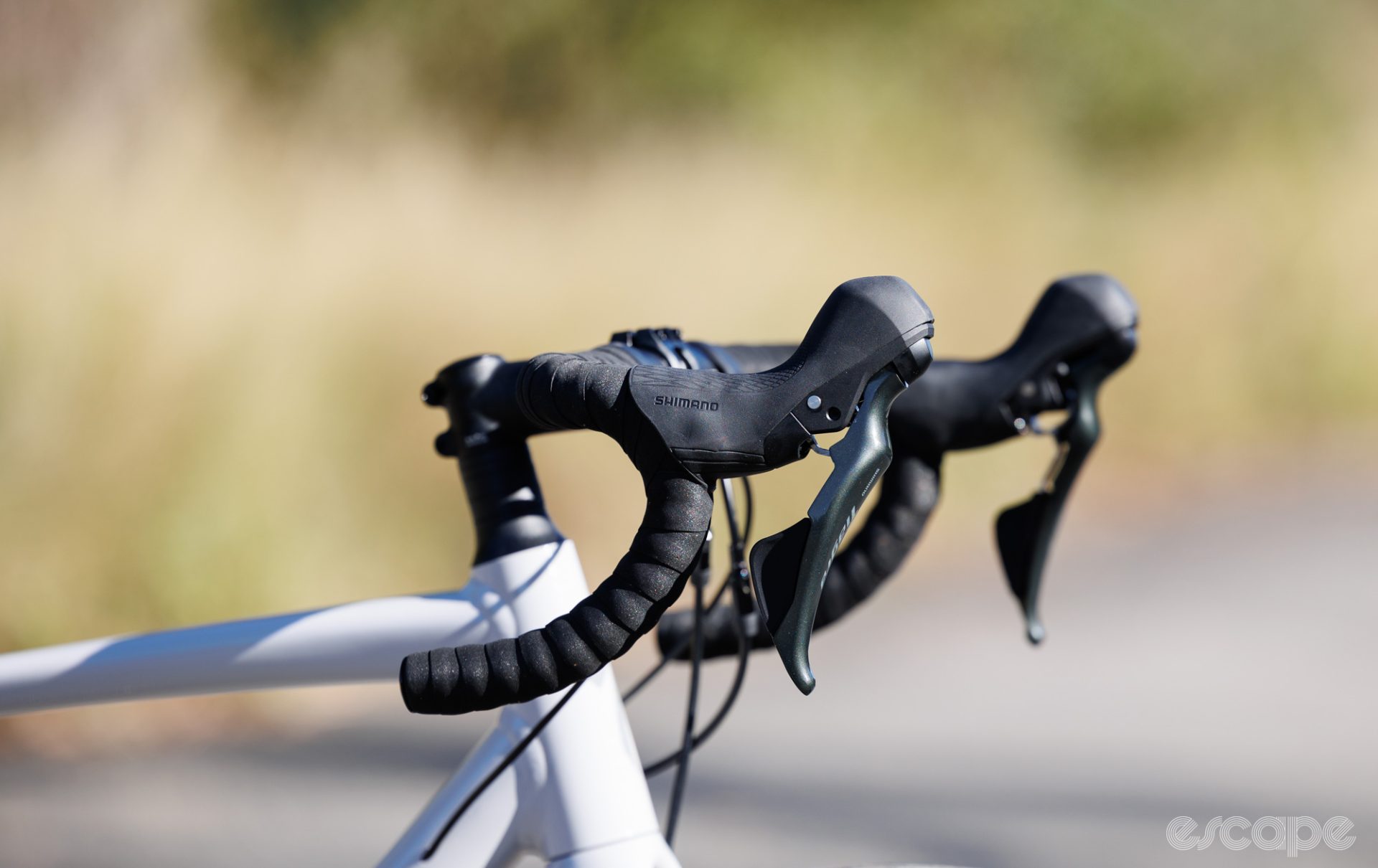
Quick thoughts on the base-level Allez
Now, I’ll preface this by saying that I haven’t ridden the lowest-price Allez. Heck, I haven’t even laid eyes upon it. However, within the past year, I’ve ridden bikes with identical Claris 8-speed shifting and Tektro MD-550 brakes. And of course, the rest of the base-level Allez matches the Allez Sport I’ve reviewed here.
That experience tells me I would be less favourable if my test time were aboard the basic Allez. The Claris shifting is less precise and the lever ergonomics are from a few generations before. Those Tektro mechanical brakes (although still better than basic rim brakes in function) lack the light hand action and confident control you get with the Tiagra hydraulic discs. And while hydraulic discs will automatically compensate for pad wear, the mechanical brakes will require ongoing adjustment to keep them working well.
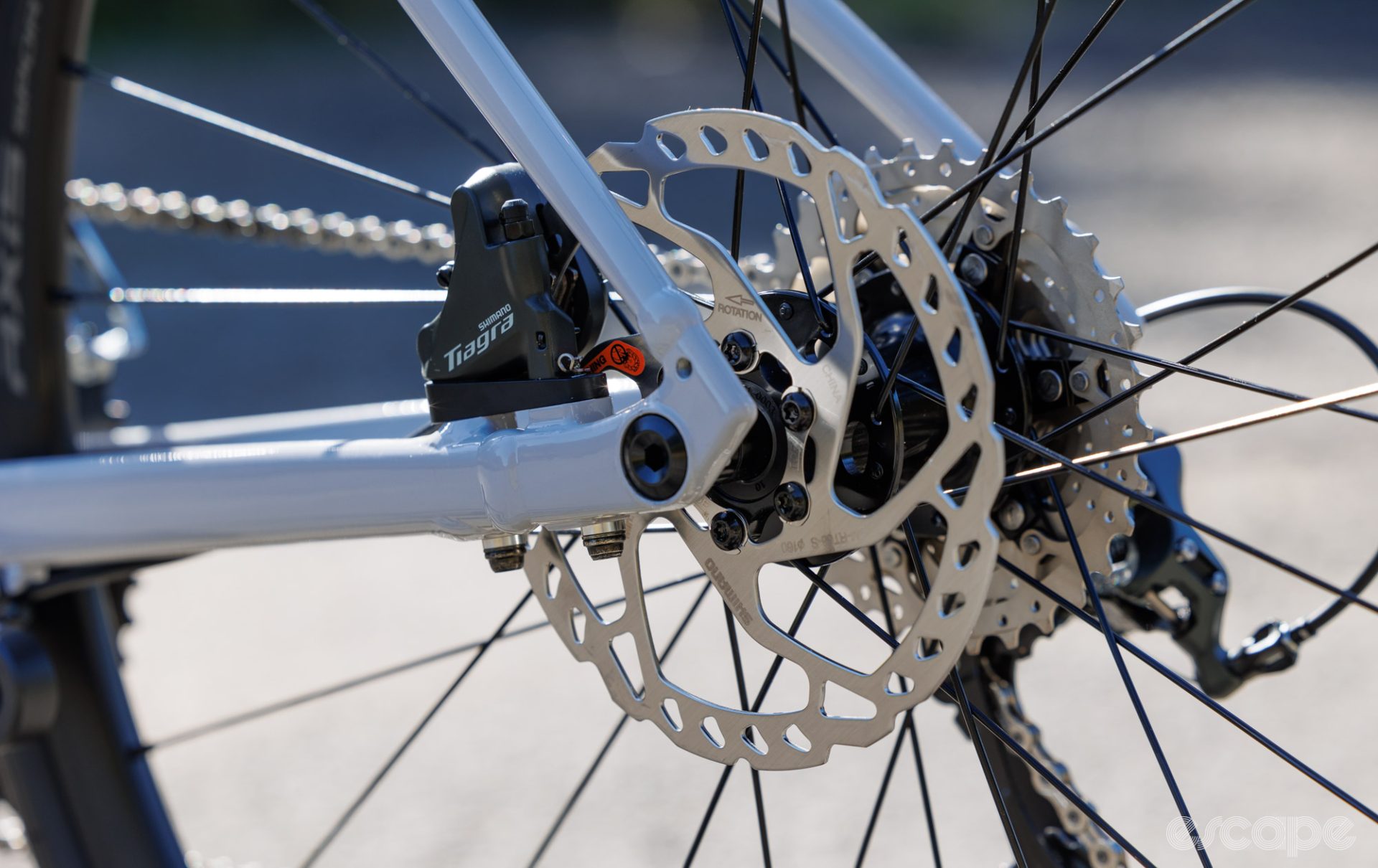
The Allez Sport is a bike I found myself willingly taking out for social rides, and I hardly shut up about it when I did. By contrast (and considering I’m a spoilt tech editor) I wouldn’t be electing to spend my personal ride time on the cheaper Allez.
If your budget stretches to the Allez Sport, stretch it – you won’t regret it. If the budget can’t extend that far, I dare say look at alternatives with better components, whether a bike with rim brakes or something second-hand. The base-level Allez has a wonderful frame for a foundation, but it’s a lot of money for an approximate 10 kg road bike with Shimano’s most recreational road components.
How price-competitive is it?
I came to have a deep appreciation for the new Allez before I saw the pricing, and at first, I thought it was priced on the high side. That was until I started to look into the directly comparable competition.
Firstly, I was surprised by how many gaps the biggest brands have in their ranges at this price point. It seems many brands have strong offerings within the entry-level gravel space, but far fewer choices for a road bike. In fact, some value-oriented brands, such as Marin, have left this category altogether.
Of the competition, Canyon’s Endurace AL 6 is the only bike that genuinely beats the tested Allez Sport in an apples-to-apples comparison of what you get for what you spend. In the USA, the Canyon AL 6 is US$300 less (not factoring for shipping), while in Australia, it’s a more obvious AU$650 difference (again, not factoring for shipping). The Canyon is a great bike, and a worthy contender, and it’s important to note that price difference comes from a vastly different business model.
Specialized bikes are purchased through an enormous dealer network of physical retailers who are there to ensure you buy the right size, are comfortable on the bike, that the bike is set up correctly when you buy it, and quite possibly, that the bike is still working as intended a few months down the line. By contrast, Canyon’s direct-to-consumer business model leaves much of that in the hands of the buyer, and at this price point, I still think consumers can gain a great deal of valuable knowledge and experience by being face-to-face with passionate shop staff – especially if it’s a bike shop that’s community-led with group rides, social evenings, and the like. If you are considering the Canyon (or any other consumer-direct offering), make sure to include some room in your budget for having it checked over by a professional – the build quality is good but not always perfect.
Other equally versatile and great-riding bikes in this category that have left a positive impression on me are the Trek Domane AL Disc and Giant Contend AR. While unavailable in many markets, those in the USA will find the Trek Domane AL Disc 4 with a comparable parts list and price. Unfortunately, Giant doesn't currently offer a bike directly comparable to the Allez Sport (at least not within the USA or Australia).
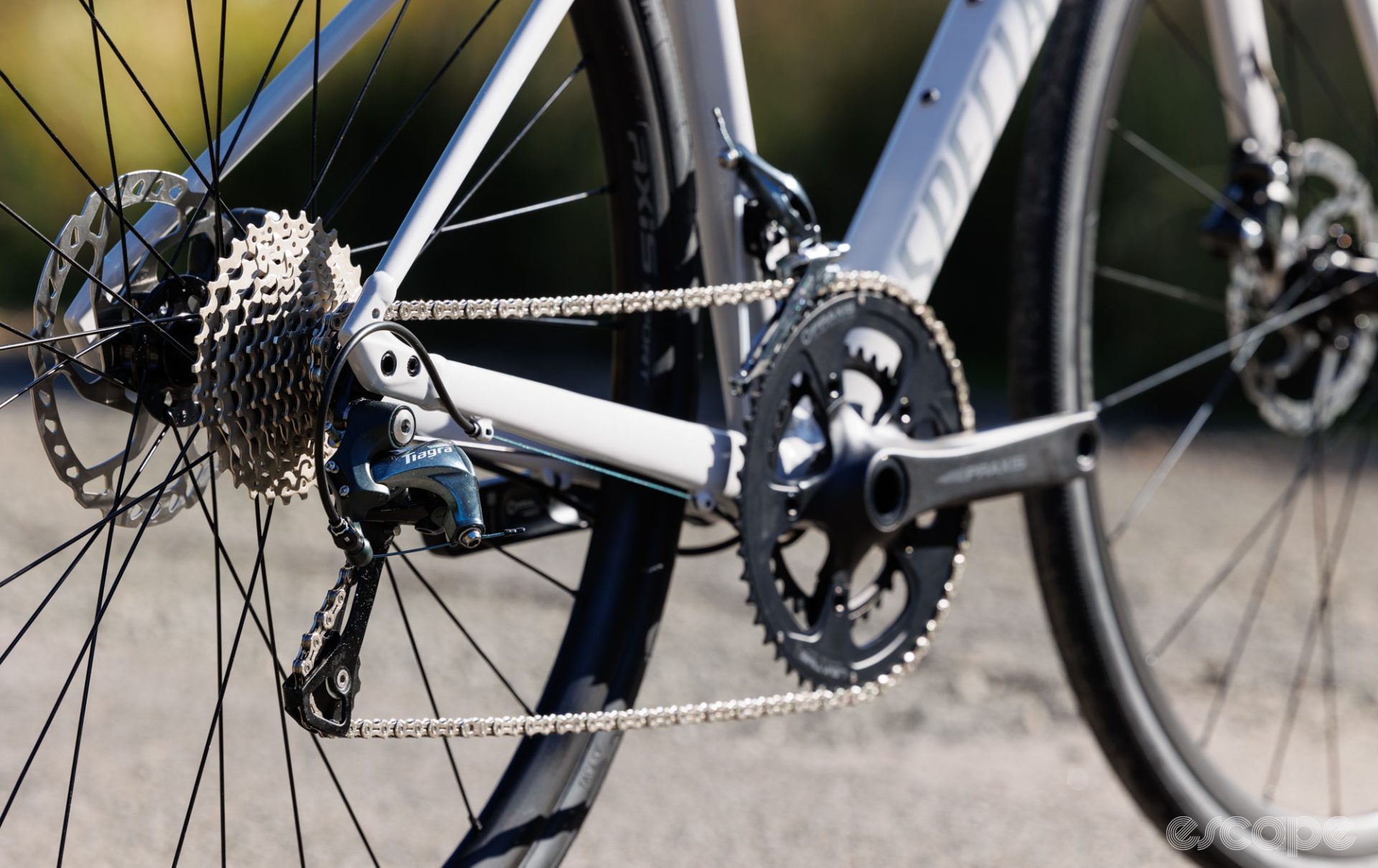
It’s also important to note that the entry-level road bike category is commonly served by countless regional-based brands that you’re unlikely to find beyond your own country. In the USA, it’s brands like Fezzari and Diamondback. In the UK, something like Ribble or Vitus may have something worth a gander (Vitus is now available in the USA, too). In Australia, there are the likes of Avanti and Apollo. And then there's the international sporting goods powerhouse, Triban (house brand of Decathlon). While I haven't ridden many of these regional offerings (at least not recently), I can confidently say that the new Allez sets an awfully high benchmark for others.
Allez vs. Allez Sprint
Specialized overhauled last year its premium alloy road racer, the Allez Sprint. It’s a bike designed to replicate the geometry of its Tarmac carbon cousin closely, but with a high-end and novel approach to aluminium manufacturing. It’s a bike I’ve tested previously at a different publication.

While the Allez and Allez Sprint share a name and material, I strongly believe they’re aimed at very different customers – and that remains true after you ignore the obvious price differences.
The Allez is Specialized’s entry-level road offering and with a more laid-back and accessible geometry to match. Meanwhile, the Allez Sprint is a racer’s bike, it has an aggressively low stance and quick handling that is arguably an acquired experience. Similarly, the Allez Sprint feels stiffer in all directions, perhaps a benefit to a strong sprinter, but something that makes for a more rattly ride. And with a claimed tire clearance of 32 mm (3 mm less than the Allez), the Allez Sprint is slightly less capable for unpaved excursions.
If your budget has you looking at the Allez, and then thinking about spending more for the Allez Sprint, you need to take a step back and figure out how you want your bike to fit and handle. The next logical step up from the Allez are carbon bikes like the Cannondale Synapse, Canyon Endurace, Giant Defy, Specialized Roubaix, and Trek Domane.
Wrap-up
When I think back to past and present times of riding many other entry-level road bikes, I think of all the times wondering whether the brakes would pull me up in time, whether the gears would shift before the hill steepens, whether my back would survive the transferred impacts of the all-too-stiff frames, and whether the hard-feeling tyres would hold to the surface.
All of that adds up to an experience that, while functional for the mere purpose of moving you from one point to another, wasn’t always enjoyable. A good bike is one that makes me want to ride farther, and too many entry-level bikes fail at this simple ask.
A good bike should provide a sense of joy when gliding along a sweeping road or finding zen in the tempo of a climb. It’s this joy that hooks people into being lifelong cyclists. And the new Allez Sport provides this very joy. It’s a bike that, despite its affordable price, had me wanting to ride it more and didn’t leave me begging to be back on my own bike.
It didn’t give me a single one of the concerns outlined above that are applicable to too many entry-level road bikes. The modern hydraulic disc brakes far surpass any low to mid-range rim brake of old, the wider tyres allow vastly more confidence than a road bike of ten or even five years ago, and the frame doesn't ride like it's made of wrought iron.
So much have I enjoyed riding this bike, it only further reinforces a wish of mine. I wish the industry would rewind the clock a bit and offer more bikes with this geometry and simplicity but with the option of higher-end parts.
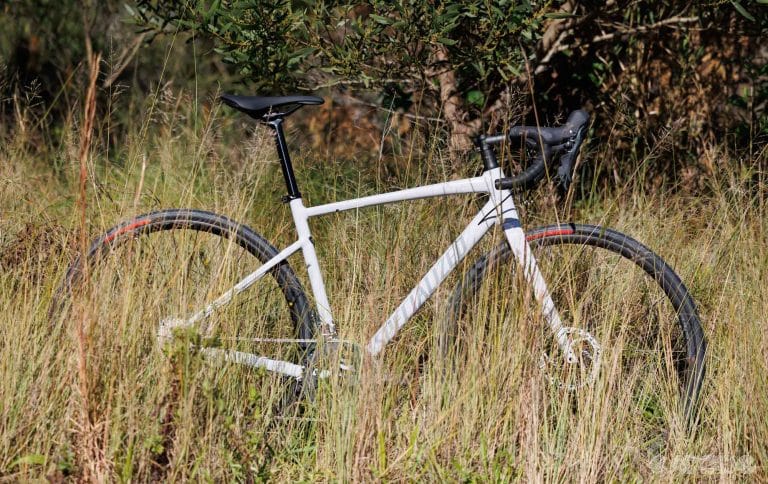
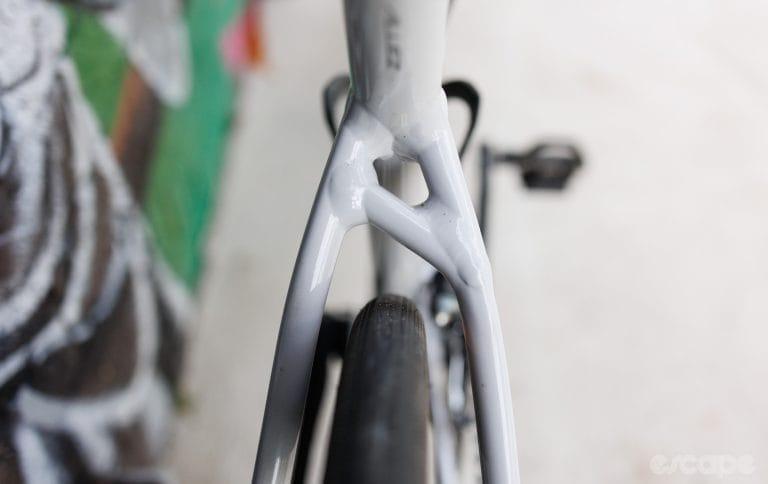
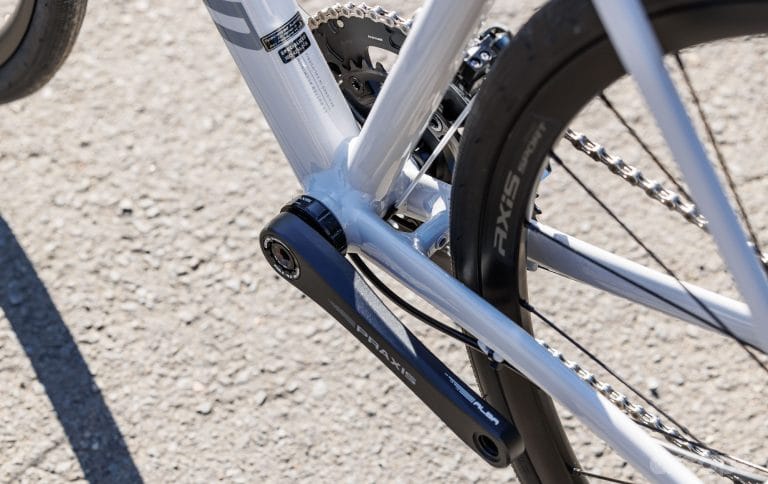
Did we do a good job with this story?

